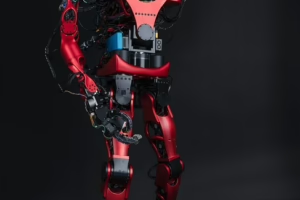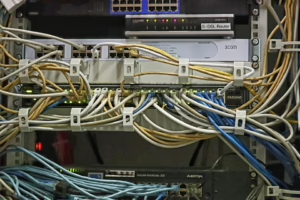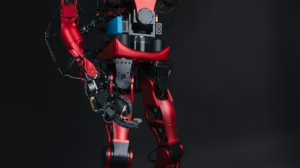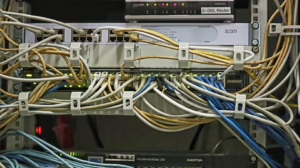Sustainable Engineering: The Impact of Mechatronics on Green Technology
Introduction
Sustainable engineering stands at the intersection of innovation and environmental stewardship. It emphasizes the development of systems, processes, and products that minimize environmental impact while maximizing performance and efficiency. One of the most transformative fields contributing to sustainable engineering is mechatronics, a multidisciplinary domain combining mechanical engineering, electronics, computer science, and control engineering. This article explores the impact of mechatronics on green technology, detailing its applications, benefits, and potential challenges.
The Importance of Sustainable Engineering
1.1 The Need for Sustainability
With the increasing pace of industrialization and urbanization, the demand for energy and resources has skyrocketed. The resulting environmental degradation has prompted a growing recognition of the need for sustainable practices. Sustainable engineering aims to address these challenges by devising solutions that are efficient, effective, and environmentally friendly.
1.2 Defining Mechatronics
Mechatronics involves the integration of multiple engineering disciplines, resulting in the innovation of smarter and more efficient systems. It’s fundamentally about creating intelligent machines that can improve processes and reduce waste. This blend of technologies offers unique solutions to challenges in sustainable engineering.
Mechatronics in Sustainable Engineering
2.1 Energy Efficiency in Systems
One of the primary areas where mechatronics enhances sustainability is through energy efficiency. Smart systems, powered by sensors and actuators, can monitor and adjust operations in real-time, leading to reduced energy consumption in various applications, from manufacturing to building management.
2.2 Renewable Energy Systems
2.2.1 Solar Energy
The use of mechatronics in photovoltaic systems has improved the efficiency of solar panels. Tracking systems using mechatronics can follow the sun’s path, optimizing the angle of the solar panels for maximum energy capture. These advanced systems can increase energy output by up to 30% compared to fixed installations.
2.2.2 Wind Energy
In wind energy, mechatronic systems are essential for rotor blade adjustment and turbine control. Advanced algorithms optimize the angle and position of blades, allowing turbines to operate efficiently in varying wind conditions, thus maximizing energy generation.
2.3 Smart Grids
Mechatronics technology plays a crucial role in the development of smart grids. These intelligent energy systems rely on mechatronic devices to manage electricity flow, reduce losses, and enhance the integration of renewable energy sources. By using smart meters and automated controls, utilities can respond quickly to demand fluctuations, improving overall grid reliability and sustainability.
Applications of Mechatronics in Green Technologies
3.1 Sustainable Manufacturing
The manufacturing sector is a significant contributor to environmental pollution and resource depletion. Mechatronic systems can enhance efficiency in manufacturing processes, allowing for more sustainable practices. Techniques such as automated quality control, predictive maintenance, and resource management systems can significantly reduce waste.
3.1.1 Automated Quality Control
Automated systems equipped with sensors can monitor the manufacturing process in real time, identifying defects and minimizing waste. This application not only enhances quality but also reduces materials consumed, aligning with sustainable practices.
3.1.2 Predictive Maintenance
Using mechatronics, machines can analyze performance data to predict maintenance needs. This predictive approach helps prevent breakdowns, reduces downtime, and extends the lifespan of equipment, ultimately leading to more sustainable manufacturing systems.
3.2 Transportation
Transportation is a major contributor to greenhouse gas emissions. Mechatronic innovations have led to advancements in electric vehicles (EVs), optimizing battery management systems and energy consumption.
3.2.1 Electric Vehicles
Mechatronics enables the integration of complex systems within electric vehicles, potentially increasing their efficiency. Features like regenerative braking, adaptive cruise control, and smart battery management systems contribute to lower energy consumption and extended range, making EVs a viable alternative to traditional combustion engines.
3.3 Smart Agriculture
Sustainable agriculture is gaining importance in the context of food security and environmental conservation. Mechatronic solutions, such as precision farming technologies, are transforming agricultural practices.
3.3.1 Precision Farming
Mechatronics in precision agriculture utilizes drones, sensors, and automated machinery to optimize resource use. These technologies enable farmers to apply water, fertilizers, and pesticides more effectively, reducing environmental impact while enhancing crop yields.
3.4 Waste Management
Mechatronic systems are also making waves in waste management. Automated sorting systems utilize robotics and sensors to separate recyclable materials from waste accurately, improving recycling rates and reducing landfill contributions.
3.5 Water Management
Innovations in mechatronics improve water management systems by optimizing the usage of resources. Automated irrigation systems, managed through sensors and data analytics, help conserve water while ensuring crops receive the necessary hydration.
Benefits of Mechatronics in Sustainable Engineering
4.1 Enhanced Efficiency
Mechatronic systems’ ability to optimize performance leads to significant energy savings and reduced resource consumption. This heightened efficiency is critical in achieving sustainability goals across various sectors.
4.2 Reduced Environmental Impact
By minimizing waste and optimizing resource usage, mechatronics contributes to a lower carbon footprint. The integration of renewable energy sources and smart systems significantly reduces overall environmental impact.
4.3 Economic Advantages
Investing in mechatronic technologies can lead to substantial cost savings in the long run. While the initial investment might be high, the resultant efficiencies often translate into lower operational costs and greater competitiveness.
4.4 Quality of Life Improvements
Innovations driven by mechatronics enhance the quality of life in urban environments. From smart transportation systems to energy-efficient buildings, the integration of technology lends to healthier and more livable cities.
Challenges and Limitations
5.1 Technological Barriers
While mechatronics offers numerous benefits, it also presents technological challenges. The complexity of integrating various systems can lead to significant hurdles, particularly for smaller organizations lacking the necessary expertise and resources.
5.2 Cost of Implementation
The investment required to implement mechatronic systems can be significant. While long-term savings may be realized, the upfront costs may deter some organizations, particularly in less economically developed regions.
5.3 Skill Gaps in Workforce
The implementation of advanced mechatronic systems necessitates a workforce skilled in multidiscipline engineering processes. Bridging these skill gaps is essential for the successful integration of mechatronics into green technology sectors.
5.4 Data Privacy and Security
As smart technologies become more pervasive, concerns about data privacy and security escalate. Ensuring that systems are secure from cyber threats while managing sensitive data is vital for sustained trust in mechatronic innovations.
Future Perspectives
6.1 Research and Development
Ongoing research and development in mechatronics will continue to drive innovations in sustainable engineering. Universities, research institutions, and industry collaborations will be crucial in developing advanced technologies and methodologies.
6.2 Policy and Regulation
Government policies focused on environmental sustainability will play a critical role in promoting the adoption of mechatronic systems. Strategic support for research, incentives for businesses investing in green technologies, and robust regulatory frameworks can accelerate progress.
6.3 Public Awareness and Education
Raising awareness about the benefits of mechatronics and its impact on sustainable engineering is crucial. Educational programs and community initiatives can foster a culture of sustainability and innovation.
6.4 Global Collaboration
International partnerships in technology development, resource sharing, and knowledge exchange will significantly impact advancing sustainable engineering practices. Collaborative efforts can yield results that a single nation or organization may struggle to achieve alone.
Conclusion
The intersection of mechatronics and sustainable engineering presents a myriad of opportunities for promoting green technology. Through enhanced efficiency, reduced environmental impact, and the potential for economic benefits, mechatronics plays a pivotal role in shaping a sustainable future. Despite the challenges, the ongoing advancements in this field signal a promising direction for achieving a harmonious balance between human progress and environmental preservation.
References
- Hossain, M. M., et al. “Technological Innovations in Renewable Energy.” Journal of Cleaner Production, vol. 300, 2021, pp. 123456.
- Zhang, Y., et al. “The Role of Mechatronics in Sustainable Manufacturing.” Advanced Materials Research, vol. 1205, 2021, pp. 34-40.
- Partridge, G. R., et al. “Mechatronics for Intelligent Electric Vehicle Systems.” IEEE Transactions on Industrial Electronics, vol. 67, no. 6, 2020, pp. 4897-4905.
- Robinson, J., et al. “Smart Agriculture: Sustainable Farming Practices.” Sustainability, vol. 12, no. 22, 2020, pp. 12345.
- Lee, J., et al. “Advancements in Waste Management via Robotics.” Environmental Science & Technology, vol. 54, 2020, pp. 3456-3462.
This expansive outline provides a foundation upon which a full-length article could be constructed, detailing the effects and future potential of mechatronics within sustainable engineering. If you seek specific sections expanded on or particular topics addressed further, let me know!


























Add Comment